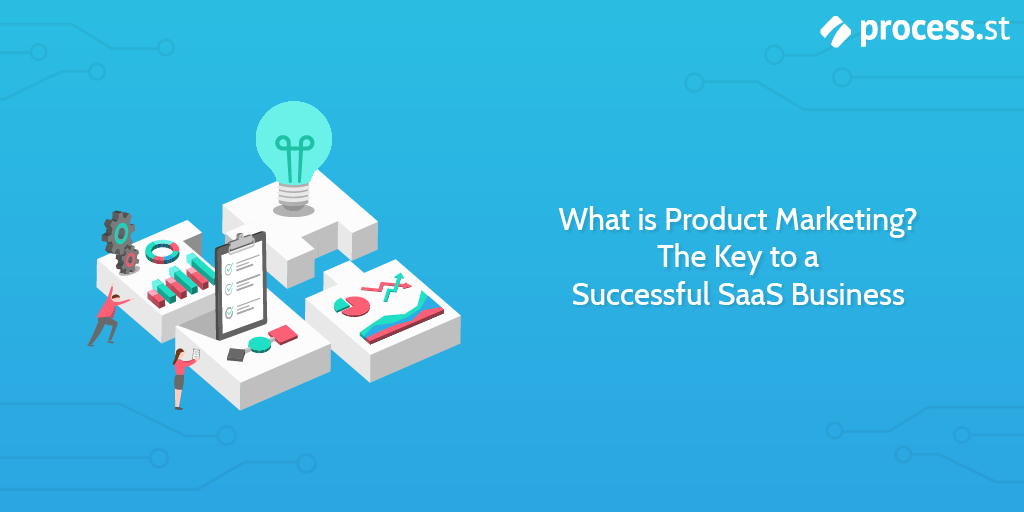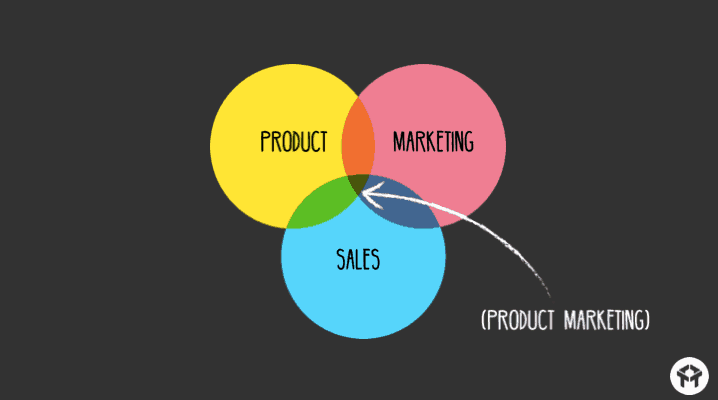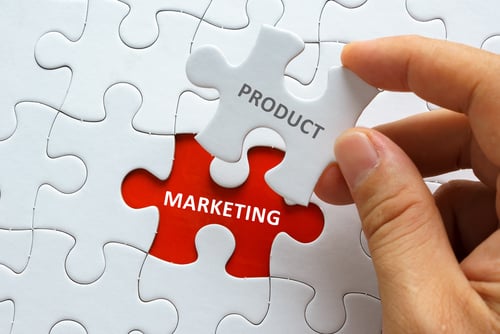
The importance of the relationship between product and marketing is something that’s often overlooked.
But when the product and marketing teams aren’t on the same page regarding the product and the problems it aims to solve, chances are the marketing won’t match the product’s value proposition and in turn, will discourage potential users from signing up.
This could be detrimental to the success of a product organization.
So, what can you do to avoid these miscommunications and build a synergistic relationship between the two?
In this article, I’ll share some tips and information that will be critical in strengthening the relationship and performance of the product and marketing teams at your company to achieve success.
We will cover:
- What is product marketing?
- Understanding the product-first marketing approach
- Product marketing synergy
- Benefits of product marketing
- 3 Key elements to product marketing synergy
- How to use Process Street to strengthen product marketing strategy
- Product marketing synergy: The bottom-line
What is product marketing?

Before a product launch, a product marketer researches and develops a comprehensive model of their target user. With this, they can establish the company’s position in the market and create relevant and concise promotion material that will communicate the benefits of their product to potential users. But the work doesn’t end as soon as the launch is over.
After a launch, the product marketer then keeps track of the product’s performance in the market and uses that information to inform whether they should shift their marketing approaches for better results. They must continue efforts to drive usage of their product and also keep in mind the market and how to advance further.
Understanding the product-first marketing approach
A product-first approach to business means putting value into user experience and product adaptability above all else.
In a company, this works best when put into practice with teams made up of people with a background in product rather than sales or business. This is an important detail to note because the priorities between a salesperson and a product expert are very different.
A founder with a background in sales has a focus on customer acquisition, generally by any means necessary. This could result in, for example, altering the product simply to appeal to the demands of certain customers, rather than keeping true to itself.
While this may work sometimes, it usually only pays off in the short-term, and may drive away the primary audience in the long-term.
Product-first companies practice unwavering confidence in the product they offer. They are willing to make short-term compromises, like saying no to customer demands that may not fit their value proposition, or operating under a freemium model if it means greater long-term growth. They have trust in their product enough to understand that if enough people are given the opportunity to use their product, enough people will eventually purchase it. The focus is simply on the long-term gain.
The CEO of Evernote, Phil Libin, once said:
“The easiest way to get one million people paying is to get one billion people using!”
If the product has value, users will recognize that and evolve into customers and those customers will then evolve into advocates. This is the framework for a successful product-first marketing approach. The teams must understand when to make compromises and how to avoid interfering with the vision if it doesn’t strengthen the product for the target audience. When it’s done right, the product will simply sell itself.
Product marketing synergy
Product marketing synergy is when both the product and the marketing departments are working together in such a way that it benefits the performance of the overall company.
The goal should be not only for product and marketing to see eye to eye, but to create a whole that is stronger than if they worked individually.
Product marketing: Understanding the goal of product
The product team plays a critical part within a company. The product team is responsible for creating a product that strives to solve a user’s particular problem.
This product is the heart of the company. Without the product, there is essentially nothing to market, no one to market to, no company at all.
But it isn’t enough to have a wonderful product if no one knows about it or why they need it. This is where a successful marketing team can make an invaluable difference to the success of a company.
Product marketing: Understanding the goal of marketing
The ultimate goal of the marketing team is to attract new users for the product and convince them to sign up. For this to be successful, the marketing team and the product team need to practice strong communication with each other. The marketing team needs to fully understand the product and what problem the product aims to solve. This then informs the marketing team about the company’s potential target audience and therefore further informs their marketing decisions.
It’s not sufficient to just have skilled people working in the product and marketing teams. These people also need to prioritize a collaborative relationship between the departments to achieve success. It is key that the product team and marketing team work together to devise a plan for product and messaging that will attract new users and keep them.
Benefits of product marketing
Product marketing works to align marketing, product development, and customer success.
SaaS companies should begin planning their marketing at the product itself and work their way from there. The product is the heart of the company, and therefore it should inform decision-making, such as; target market, marketing model, messaging, content, and anything else.
When these teams begin working in harmony, it can, in turn, help build user trust because their expectations are being met. For example, if the marketing is effective, but the product isn’t in line with what was promised, then potential users won’t return.
The approach allows for a better understanding of the product itself and what it has to offer potential users. This is crucial for the marketing team, because not only should they focus on promoting this product to as many people as possible, but they also need to be able to concisely and honestly communicate to potential users how this product will benefit them.
Without a complete understanding of the product, the marketing may not match the user’s experience of the product, and they would be more likely to abandon it after a brief period.
This is where product and marketing synergy makes a real difference for a company.
3 Key elements to product marketing strategy
To best begin understanding how to implement product marketing strategy into your organization, I’ve broken it down to the three most valuable key elements you should follow:
Keep it simple
Devise a clear and simple marketing campaign to attract potential users to the company site. It should be captivating enough to interest them, but also easy to digest.
Focus on one or two main things your product has to offer so it doesn’t become overwhelming or difficult for the user to understand.
Know your user
Develop a thorough profile of your company’s target user and refer to it when choosing where to reach out to them and inform them about the company site.
This will ensure more quality leads, as opposed to a more blind marketing approach that perhaps may reach many people, but wouldn’t be the particular target audience that will actually sign up.
Meet user expectations
Once the potential users visit the company site, they have to feel rewarded when faced with the product. The product should stand up to the expectations that the marketing built up for the user.
It’s perfectly fine if the product offers more than the marketing conveyed, as long as it meets the user’s expectations.
These three elements are all equally as important as one another and need to be working in synergy for the product and company to flourish.
How to use Process Street to build a product marketing strategy
There are many tools you could implement that can make the endeavor of synergizing your product and marketing teams a lot easier.
For instance, you could use BPM software like Process Street to build processes and connect different people from different departments to these processes to encourage a more collaborative effort.
With Process Street’s Role Assignments feature, you can do exactly that. It allows you to choose who will be assigned to each task in your process checklists and automate this moving forward without any room for error.
This can allow for your product and marketing teams to easily collaborate on their work without much effort on your part.
Role Assignments are a Business Pro payment plan feature only, so make sure to upgrade your plan to have access to this feature, and more!
Here’s a webinar for a great introduction to Process Street:
We also have a lot of articles related to product marketing:
- The Straightforward Guide to Product Strategy (With Templates)
- Agile Marketing: What It Is, How to Use It and Why You Need It
- 7 Essential Design Processes & Checklists (UX, Web Design, Branding…)
- Agile ISO: How to Combine Compliance with Rapid Process Improvement
- What is Fake Agile? Understanding the Dark Side of Agile and How to Avoid It
- Kanban vs Scrum: Understanding the Tools for Agile Success
And here are some templates you may find helpful:
- Product Strategy Template
- Sample Product Innovation & Technology Strategy PDF Template
- Product Strategy Template for Agile Product Managers
- Sample Strategic Business Plan
- Product Launch Template
- Client Onboarding for a Marketing Agency
- Client Onboarding for a Marketing Agency
- Personalized marketing campaign template
- Email Marketing Campaign Template
- Digital Marketing Plan Template
Product marketing strategy: The bottom line
Though it isn’t always easy, open communication and a deep understanding between product and marketing are critical for the success of a SaaS business.
If the marketing is attractive, but the product isn’t in line with what was promised, then potential users won’t come back.
This could be a result of several things:
- the product may not have a useful value proposition to begin with
- the marketing team may not fully understand what the product has to offer
- the marketing team is approaching their promotions dishonestly by making false promises and valuing quick clicks over long-lasting customer success
On the other hand, the company may have a wonderful product, but the marketing isn’t enticing. In turn, potential users won’t feel any reason to visit the company site and wouldn’t learn about what the product could offer them.
It can certainly be difficult to come up with a concise, yet enticing message, even with a great product. It should be a balance where the potential user understands what the product can offer them and why they should care about it, but it isn’t so much that the user feels burdened.
A reliable approach is focusing the attention on just one or two of the product’s major benefits at first. This way, the user has an expectation that is not only met, but surpassed.
Now, even if both the product and the message are great, there is still room for failure if the target market isn’t being reached.
The marketing team must have a solid understanding of their target users and how/where it is best to reach them, because otherwise, potential users would just never even know about the product to begin with.
Productive market research and planning can make a substantial impact on the ultimate success of the company.
So, as you can see, it’s crucial that each of the three key elements to product marketing synergy are working together for the long-term success of the company.
A great product that is being highlighted by clear and effective marketing is the key to building a solid, reliable user base, and true product marketing synergy is the only way to achieve this.
We’d love to hear from some managers and executives doing product marketing in their businesses! Let us know your thoughts, and we might even feature you in a Process Street article in the future!







 Workflows
Workflows Forms
Forms Data Sets
Data Sets Pages
Pages Process AI
Process AI Automations
Automations Analytics
Analytics Apps
Apps Integrations
Integrations
 Property management
Property management
 Human resources
Human resources
 Customer management
Customer management
 Information technology
Information technology





Oliver Peterson
Oliver Peterson is a content writer for Process Street with an interest in systems and processes, attempting to use them as tools for taking apart problems and gaining insight into building robust, lasting solutions.